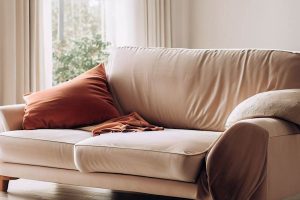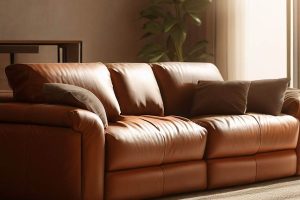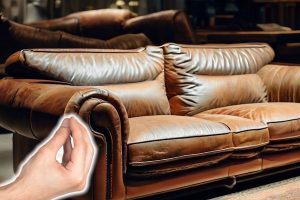Choosing the dream chair for your space can be a daunting task. With so many factors to consider, such as the size of the room, the layout, and the overall style of your home, it’s important to make an informed decision. So How To Choose the Right Size Sofa? Read the Nousdecor guide below to find out all the information you need to choose the perfect sofa for your family room.
Whether you’re looking for a modular sofa, a classic bench, or a sofa set, we’ll cover everything from how to measure your space and find the right measurement for sofas to how to style it with the perfect table and wall art above the sofa. We’ll also discuss the importance of coordinating the measurement of your sofa with other elements in the room, such as the carpet, artwork, and table size.
We’ll even touch on the benefits of working with an interior designer to help you make the best choice for your space. By the end of this highly reviewed sofa guide, you’ll feel confident in your ability to choose the best couch for your home.
Takeaways
- When selecting a sofa, first consider the dimensions of the room it will occupy.
- Carefully measure the length, width, and ceiling height using a tape measure to determine the ideal sofa dimensions based on the available floor space.
- Be sure to account for adequate traffic flow clearance around the sofa, leaving enough space for walking paths and navigation through the seating area and room.
- It’s also important to factor in specific seating requirements, choosing a sofa size that will comfortably accommodate the number of people needing to sit according to your desired layout.
- Additionally, take into account the scale and placement of other furniture pieces and doorways in the room when selecting sofa size.
- Choosing the right size sofa makes the most of the available room area, allows unfettered traffic flow, and comfortably fits the required number of occupants for an optimal furniture arrangement and seating experience.
How To Choose the Right Size Sofa – Perfect Sofa Size From Sectional To Couch
Finding the right measurement for a sofa is crucial for creating a comfortable and functional home. When considering sofa measurements, it’s important to take into account the inches of room you have to work with, as well as the width of your room.
Sofa sizes can vary greatly, so you’ll want to measure your space and consider the standard sofa depth and the width of your room. In a smaller room, you’ll want to make sure there is enough room around the sofa for traffic flow, as well as for lighting fixtures and coffee tables.
When determining the size and style of the new sofa you want, it’s important to consider the existing furniture and architecture of the room. A good rule of thumb is to choose a chair that takes up about two-thirds of the wall length, as this will ensure the chair gives the room a sense of scale without overwhelming it.
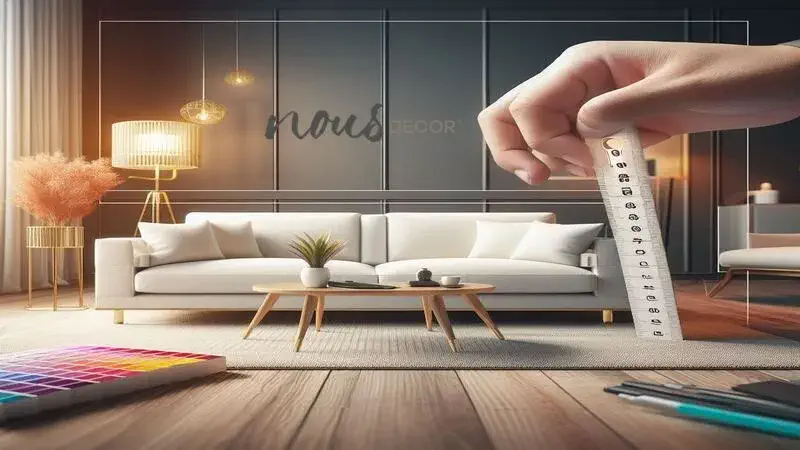
Ultimately, finding the best sofa from sectional to bench comes down to knowing the use of your living room furniture, the shape of your room, and keeping the traffic flow of the room in check. Another consideration is the DIY firm couch cushions, which can be adjusted through DIY methods if needed.
Find the Right Scale For Your Chair
It may feel good to drive around town on your Hummer; however, after you need to parallel park it, you will likely encounter some problems. Within this event, your Hummer is your chair, and along the parallel parking place is the living space. Purchasing a sizable, 3-piece chaise chair may maximize your relaxation, but it’s likely to devour all your space if you reside in a studio apartment.
It may be comfortable, but it will not be quite as comfortable once you need to use a pole vault to get across the room. This may appear obvious, but many individuals still choose that are too large or too small for their own space.
A general rule of thumb is your chair shouldn’t occupy the whole length of a wall socket. There should be at least 18″ of space on both sides of the sofa. If you’d like a chair having a duvet afterward, the lengthy chaise portion shouldn’t extend more than halfway through the room. The chair also needs to be in scale with the rest of your decoration, it should not be too big or too small.
Determine the Shape of Your Room
Not all dwelling rooms are made equal. Nowadays there is more variation in the areas we are living in. A renovated attic may have exposed pipes and load-bearing columns becoming the method of furniture while other houses have enormous open-floor program expanses to supply.
Chancing upon a chair that fits the contour of your area is vital. A chair shouldn’t protrude beyond a present wall or float in an open area. A sectional sofa is perfect for homes with spacious floor plans since it can help provide separation and shape into the distance.
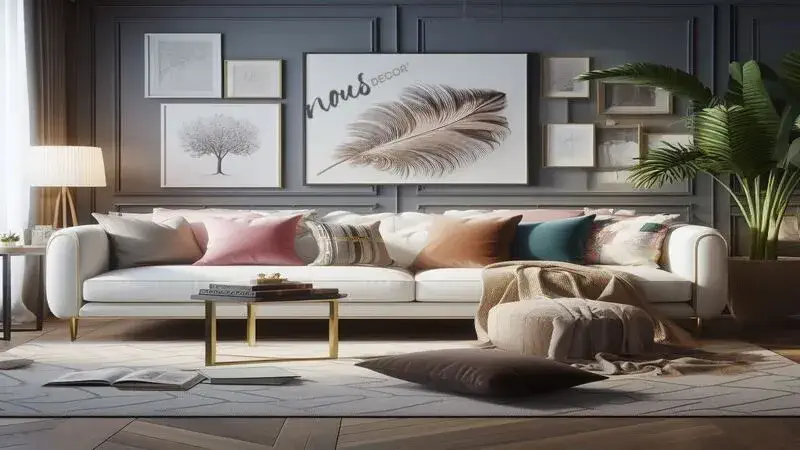
It can help specify the living room zone enclosing the dining area zone. A chair shouldn’t ever block off any distinctive architectural features like fireplaces, windows, or built-in shelving. Work with these pre-existing features, allowing you to choose the ideal chair for your area.
Know the Use of Your Furniture
What are your plans for chair use? This will help you determine the measurement. A smaller, more upright chair is best for formal spaces like waiting rooms or formal sitting rooms. If you plan to use it for lounging, napping, or watching family movies, then you will want something large, deep, and comfortable. It all depends on your lifestyle.
Consider how many people can sit on the chair at one time. You might want to consider a chair with three or more chairs, or a bench-chair chair. A two-chair sofa is comfortable for two.
Keep The Traffic Flow of The Room In Check
This will find a little Feng Shui, so remain with me with this one. Folks typically neglect to consider traffic circulation whenever they search for a new chair. How people move through your distance may have a drastic effect on the power of this space (I warned you that this was going to acquire new age).
Energy and motion ought to be able to flow freely in and from the common room. Purchasing a chair or sectional that impedes the flow of energy and movement may kill the disposition of a room. A chair shouldn’t ever stay in your own space. You would like to feel comfortable in your common room, not like being held captive by the furniture.
Additionally, it is essential not to have your furniture block entryways or alternative avenues that individuals will have to get around. If you need to shuffle beyond your chair just like you are shimmying across the edge of a pond, you may wish to consider bettering your furniture. This includes making slipcovers stay put, so they don’t become an obstacle in the movement within the room.
Consider the Existing Furniture & Architecture
You will need to work around fireplaces, built-in shelves, windows, doors, and closets in your common room. To ensure everything fits correctly, triple-measure the distance between these elements.
You should keep a table at a minimum of 14 inches from your chair. You should keep your other furniture between 30″ and 36″ from the chair to allow ample space.
Tips To Measure Your Space to Get a Right Style of Sofa
When selecting a chair, it’s important to consider the measurement and shape of your space. To ensure that you have the right style of chair for your room, start by measuring your space. Use a tape measure to carefully note the dimensions of the area where you want to place the chair.

It’s also a good idea to tape off the region on the floor to visually understand the room the chair will occupy. Consider a shorter sofa if your space is limited, and measure the potential area for a side table on either side of the sofa. Additionally, think about how you want to use the room and where the sofa will fit in with your other common room furniture.
Depending on the measurement and shape of the room, you may want to position the sofa in the middle of the room or against a wall. Pay close attention to its measurement in relation to the rest of the space. Ultimately, selecting the right sofa for your space depends on taking accurate measurements and considering how it will fit into the overall design of the room.
Measure Your Space
To have a sense of the sofa measurement that your distance can adapt, observe the width and length of your space. If your area is large with high ceilings, it is a fantastic idea to search for chairs around the bigger side with more excellent backs – the open space will match the chair and make it seem grand and poised.
For those who have less room available or reduced ceilings, consider buying a briefer chair or some compact loveseat that will not overwhelm the space.
Also, make sure you assess the widths and elevation of entry doors and hallways your chair might need to be performed through upon delivery – you will need your new chair to fit through the doorway!
Tape the Region
Choose the place at which you want to put your new chair. Permit for 30″ of the walking area before the chair to keep the organic flow of traffic throughout the distance. If you’re considering pairing your chair with a table, make sure there is at least 12″ – 18″ between the two parts of furniture.
Using masking tape, create a rough rectangle around the ground where you want to set your sofa. Provided that you’re conscious of overall seat measurements, precision is not necessary here – you are searching to make a rough rule, maybe not the ideal outline of a seat.
Measure the Taped Area
As soon as your tape is positioned well and you are delighted with the measurement of this rectangle you have made, measure its length and width.
When sofa shopping, use these dimensions as the best sofa measurements that will fit your area. Start looking for sofas that roughly fit those measurements or are marginally smaller. The sofa height you select is your choice – bear in mind that it has to fit under any local windowsill or shelves.
Secondary dimensions, like chair height and seat depth, the thing more for relaxation than for positioning. If your family members are tall, then pick a sofa using a taller seat height and a higher seat thickness. If your loved ones are on the shorter side, then the contrary needs to be considered precisely.
Frequently Asked Questions
Conclusion
In conclusion, choosing the sofa with the right proportion is crucial in creating a comfortable and visually appealing living space. When considering the measurement of the sofa, factors such as the length of the wall and the height of the sofa should be taken into account. It is a good idea to look for a sofa that is around 96 inches in length, as this will not only fit well in most common rooms but also provide ample seating space.
Additionally, considering the height of the sofa, a high back of around 36 inches and a seat depth of 26 inches is recommended for optimal comfort. The measurement of the sofa should also be in relation to the rest of the furniture and decor in the room. An open space will complement a larger sofa, while a smaller space may require a more compact couch.
Finally, considering the placement of items such as a rug, round coffee table, and wall art above the sofa will also influence the overall look and feel of the room. With these tips in mind and some wall art above sofa, your entire room will get a feel of perfection in no time!

